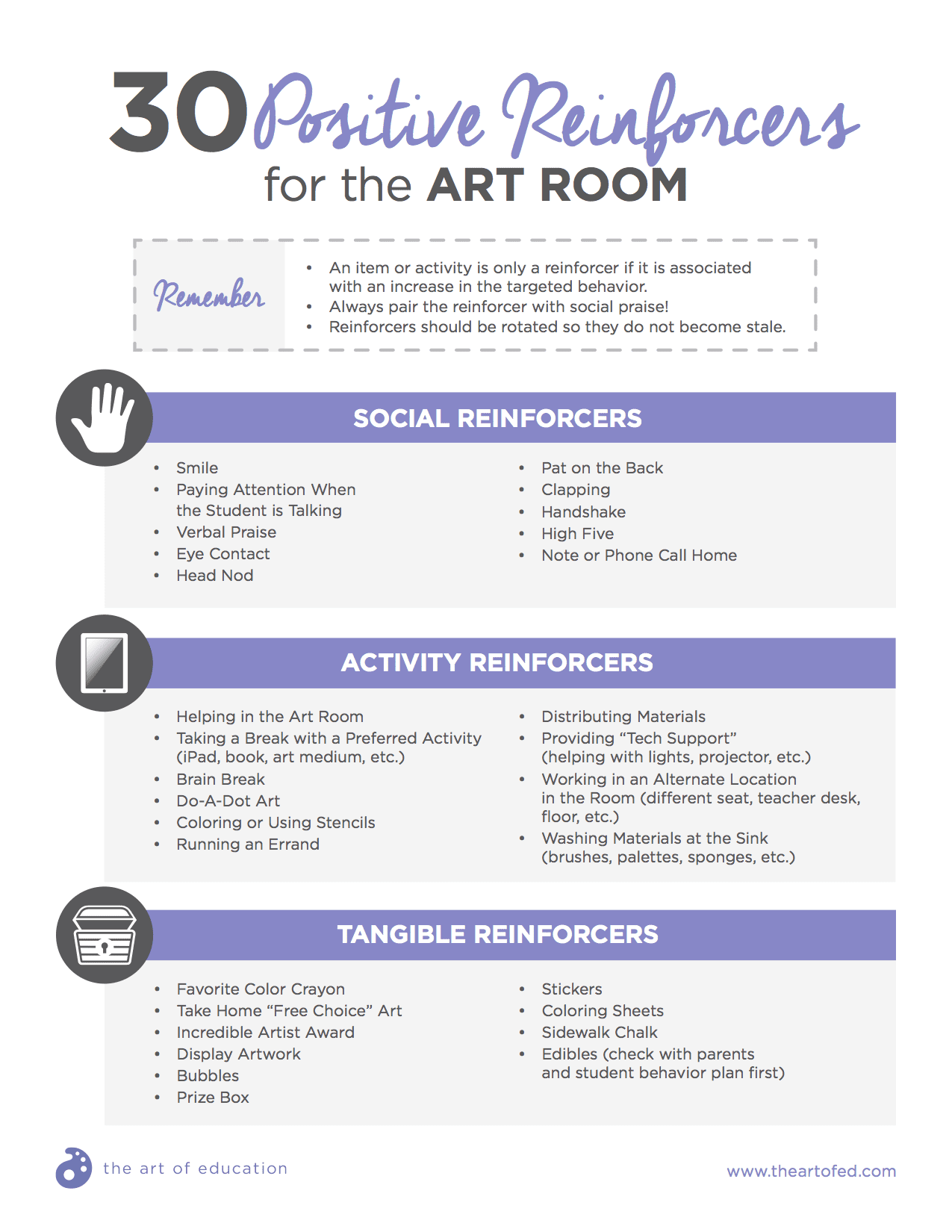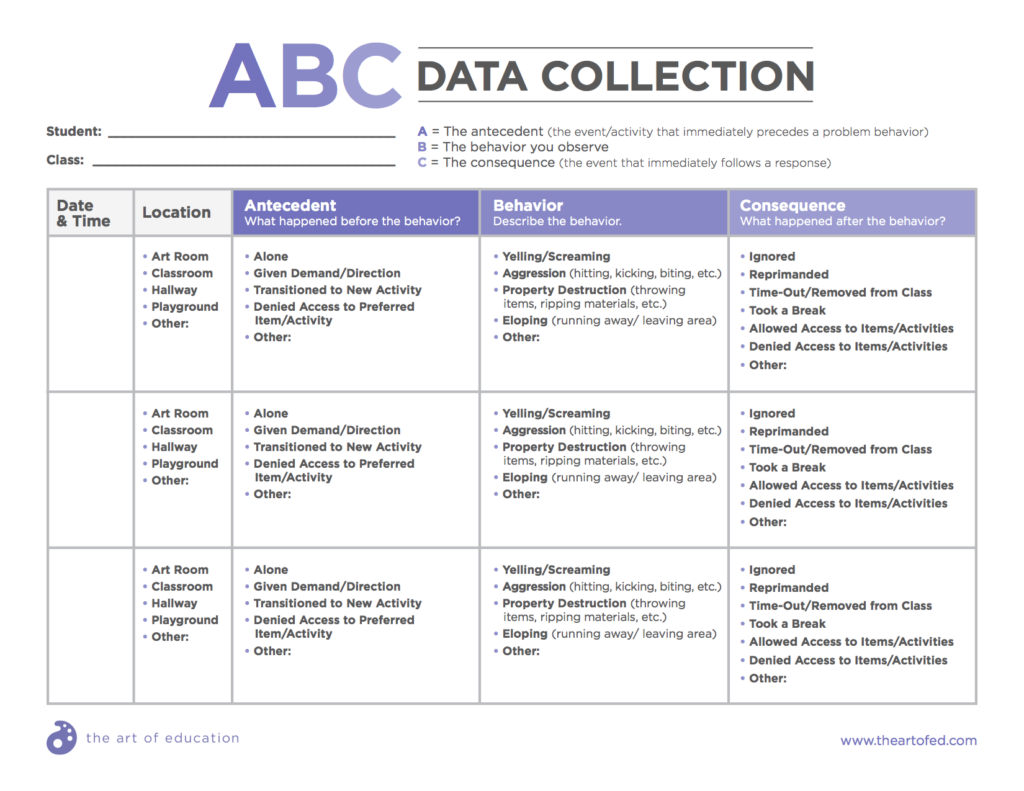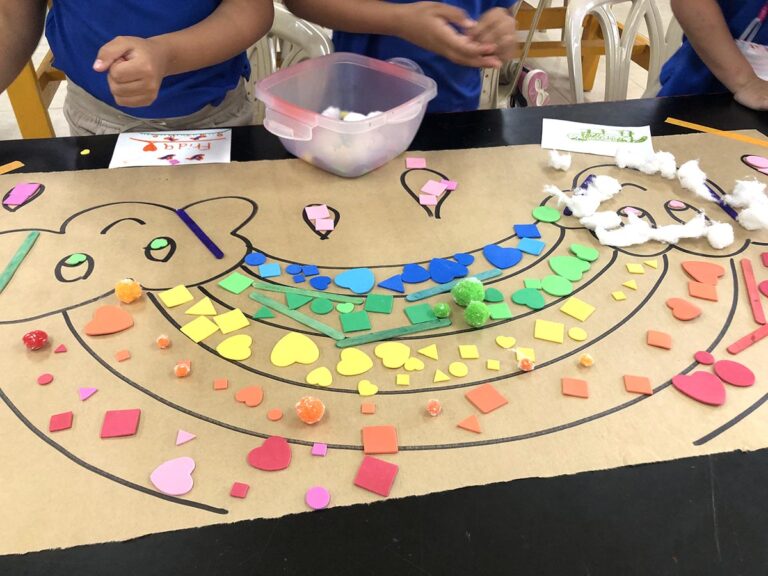Art and other “specials” are often one of the first places students with disabilities are mainstreamed, including students with autism. This is great news, as being among their typically-developing peers can benefit their social and behavioral development. However, you might feel overwhelmed and underprepared to work with some of these students. It can be tricky to meet everyone’s individual needs.
The most important thing to remember is every child with autism is unique! What works for one student may not work for another.
Here are 6 ways to make sure you can effectively meet the needs of the students with autism in your room.
1. Understand Autism Spectrum Disorder (ASD)
What does autism spectrum disorder really mean? Autism Speaks defines ASD as, “a range of conditions characterized by challenges with social skills, repetitive behaviors, speech and nonverbal communication, as well as by unique strengths and differences.” The most important thing to remember about ASD is it is a spectrum disorder, which means all students with autism will present differently. They will have varied strengths and weaknesses as well as varied severity of different impairments. You may have students who are social among peers, yet others who have no verbal language. You may have students who work at or above their academic grade level and others who have intellectual disabilities.
All of this means it’s a great idea to develop a toolbox of strategies for yourself and learn how to find the resources to best support your students.
2. Be Able to Translate Verbal Directives into Visuals
In general, students with autism struggle with verbal communication. You might give a verbal directive five times without a student responding. It doesn’t mean they are ignoring you or can’t hear you, it just means your directive isn’t computing. This is why you should use visuals to support your students’ understanding as much as possible.
Here are 4 Tips for Using Visuals with Students with Autism

1. Use Photographs Whenever Possible
For students with autism, photographs are the preferred visual.
You’ll want to take photos of:
- Yourself and the art room. Give these to the classroom teacher and/or support staff to help the student transition into the art room.
- Your classroom to help communicate transitions and directives like, “Now it is time to come to the carpet.”
- Your classroom materials to communicate which materials you will use for specific projects and where different materials are stored in your room.
- Your students working to communicate future directives like, “Time to work!”
2. Create a visual schedule so students know what to expect during the class.
Break items down into the simplest terms possible.
For example:
– Get materials
– Draw
– Paint
– Clean up
– Line up
Be sure to include transitions between activities and classroom spaces so your student with autism is not caught off guard.
3. Use visual timers.
Transitions can be especially difficult for students with autism. Try to limit student movement around the classroom (like giving group demonstrations at the student’s table, for example). When a transition is coming, pair verbal warnings like, “Five minutes until cleanup!” with visual timers so your students understand when they will be expected to transition to the next activity. Think about what will be the best timer for your student. You can project one on the SmartBoard, provide the student a tablet with a timer, or give them a physical timer. See great options here!
4. Consider using video self-modeling.
This evidence-based practice is especially effective in working with older children and adolescents with autism. Here is a tutorial to get you started. All you need is a target behavior, an iPad or iPhone, and your student!
3. Collect Data
When working with students on the spectrum, data collection is key. You need to know if your interventions are working. For students with autism, we often collect data regarding behavior. The most important thing to understand is that behavior is a form of communication. This is especially true for students with autism who may not be able to tell you what they need or want.
If you are struggling with how to help a student with a recurring behavior problem, learning to decode their behavior can help you better understand and meet their needs.
Here’s what to do:
- Define the behavior you’re seeing on a regular basis.
Does the student refuse to work? Do they run out of the classroom? Become aggressive? Scream? Pinpoint frequently occurring behaviors. - Collect baseline data using the ABC method.
Each time the behavior occurs, define what happened exactly before the behavior (the Antecedent), note what happened (the Behavior), and record what happened right after (the Consequence.) Note: Don’t confuse the word “consequence” with “punishment.” For the “Consequence” you are simply noting what the response to the behavior was. If a behavior happens repeatedly each class period, you can also tally how many times it happens. Hopefully tracking this data will help you notice trends. - Take notes objectively.
If you decide to take anecdotal notes, make sure you are describing the behavior objectively. Avoid making judgments like, “Johnny was mad.” Instead, just describe the behaviors that occurred, “When given paint, Johnny screamed and began to cry.”
Stacey Gorman, a Board Certified Behavior Analyst from New Jersey, highly recommends collecting ABC data. She told me, “Data collection is the most effective tool in treating individuals who engage in undesirable behavior. ABC data is one way to analyze patterns including specific behaviors, antecedents (triggers), and the function of the behavior. Teachers express challenges when focusing on one student when they have a whole classroom to manage. Creating individualized and easy-to-use data sheets, such as an ABC data checklist, will decrease the time and effort it takes to collect this valuable information.” Stacey designed the following tool to help teachers collect behavioral data, and was kind enough to share it here.
4. Understand Reinforcement and How to Use it
When you are trying to change a behavior, you can use reinforcement or punishment. Reinforcement means working to increase a behavior, while punishment means working to decrease a behavior. Reinforcement is more effective than punishment and is preferred to punishment, but it’s important to understand the difference. In addition, both reinforcement and punishment can be positive and negative. This can be confusing!
Let’s go through an example of each:
Positive Reinforcement: Positive reinforcement means presenting a motivating stimulus after a student exhibits a behavior. For example, a student might earn a sticker for coming into the room quietly and sitting on the carpet with the rest of the class. Earning the sticker makes it more likely the student will sit with the class in the future.
Negative Reinforcement: Negative reinforcement means removing an unpleasant stimulus after a student exhibits a behavior. For example, a student might be allowed to wear headphones to block out loud noises when attending an assembly. Wearing the headphones makes it more likely the student will attend in the future.
Positive Punishment: Positive punishment means presenting an aversive consequence after a student exhibits a behavior. For example, a student might be yelled at after standing on the table. The yelling makes it less likely the student will stand on the table in the future. (In case it’s not clear – this is a type of punishment we especially want to avoid!)
Negative Punishment: Negative punishment means removing a desired stimulus after a student exhibits a behavior. For example, a student may be removed from their peers in the classroom if they exhibit disruptive behavior. This would make the student less likely to exhibit the disruptive behavior in the future.
However, be careful! Sometimes what we think of as a punishment is actually a reinforcer. In the previous example, if a student doesn’t want to be in the classroom in the first place, removing them will actually reinforce the negative behavior.
As you can see, knowing your students and their likes and dislikes is very important in determining which types of reinforcers to use. In order to help you decide what might work in the art room, be sure to consult the classroom teacher or a student’s aide if they have one. In addition, giving the student a choice about their reinforcing stimulus is a good idea. You might say something like, “What are you working for?” Just because a student wants to work for a high five one day does not mean they will work for it the next! And remember, students with autism may only be able to work for a few minutes at a time before they need a break, so adjust your expectations accordingly.
You can download a list of 30 reinforcers to try below!
When presenting any reinforcements, remember visuals are powerful. They can help your student stay on task and remind students what reinforcer they are looking forward to. Two ideas to try are a First/Then Board and a token chart. In addition, this blog has other strategies to try, including behavioral momentum and work-break routines. Finally, if you’re looking for additional information on ABA (Applied Behavior Analysis), Behaviorbabe provides excellent (free!) webinars.
5. Collaborate!
One great thing about working with a student with autism is there is usually a team of people supporting the student, so you always have someone to go to for advice. After you read the student’s Individualized Education Plan (IEP), carve out some time to meet with the other professionals and people who know the student best.
Here are 5 types of people to get to know:
1. Special education teachers, support staff, classroom aides, or 1:1 paraprofessionals
These people likely spend the most time with your student and understand what they like, situations that may frustrate them, and how to get them back on track. These professionals can provide behavior plans and strategies already in place to help the student learn.
2. Supervisors of Special Education
Your supervisor of special education makes the big decisions about special education, placement, and levels of support. If you have a student who is struggling, make an appointment with your Supervisor of Special Education (and bring your data!).
3. Therapists
Students with autism are often provided with lots of services through the school, including, but not limited to, occupational therapists, physical therapists, and speech therapists. Each of these individuals work with specific needs and can provide you with strategies and targeted goals, as well as any equipment or furniture to help the student in your classroom.
4. Behaviorists or BCBAs
Many districts have a behaviorist or Board Certified Behavior Analyst on staff. Check with your Supervisor of Special Education to see if you have access to their services! Often, we are too involved with a student personally to understand the patterns in their behavior. A BCBA will be able to visit your classroom, collect data, and develop a behavior plan.
5. Parents
Connecting with parents is key in working with students on the spectrum. Parents will be able to provide you with preferences, give permission or decline permission to use edible reinforcers, and give you a well-rounded perception of your student. Consider a note home to parents when the student has a great day or sending them an image of the artwork the student created to build a positive relationship.
6. Take a Course!
Art can be a difficult class for students with autism. They may be integrated into a class with unfamiliar peers or have sensory difficulties with the different materials. If you don’t feel prepared, it can be difficult for you too. Consider seeking out some PD that specifically addresses issues you might see. The course Autism and Art will help you develop tools and strategies you can use to support students on the spectrum in your classroom. Another great course option is Reaching All Artists Through Differentiation. This course takes a close look at instructional strategies and activities. The goal is to develop a solid plan to meet the various needs of all students.
Having a student with autism in your classroom doesn’t have to be stressful. With the right background knowledge and a comprehensive set of tools, you can set both yourself and your students up for success!
What questions do you have about supporting your students with autism?
What type of training does your school provide for working with students with special needs?
Magazine articles and podcasts are opinions of professional education contributors and do not necessarily represent the position of the Art of Education University (AOEU) or its academic offerings. Contributors use terms in the way they are most often talked about in the scope of their educational experiences.







